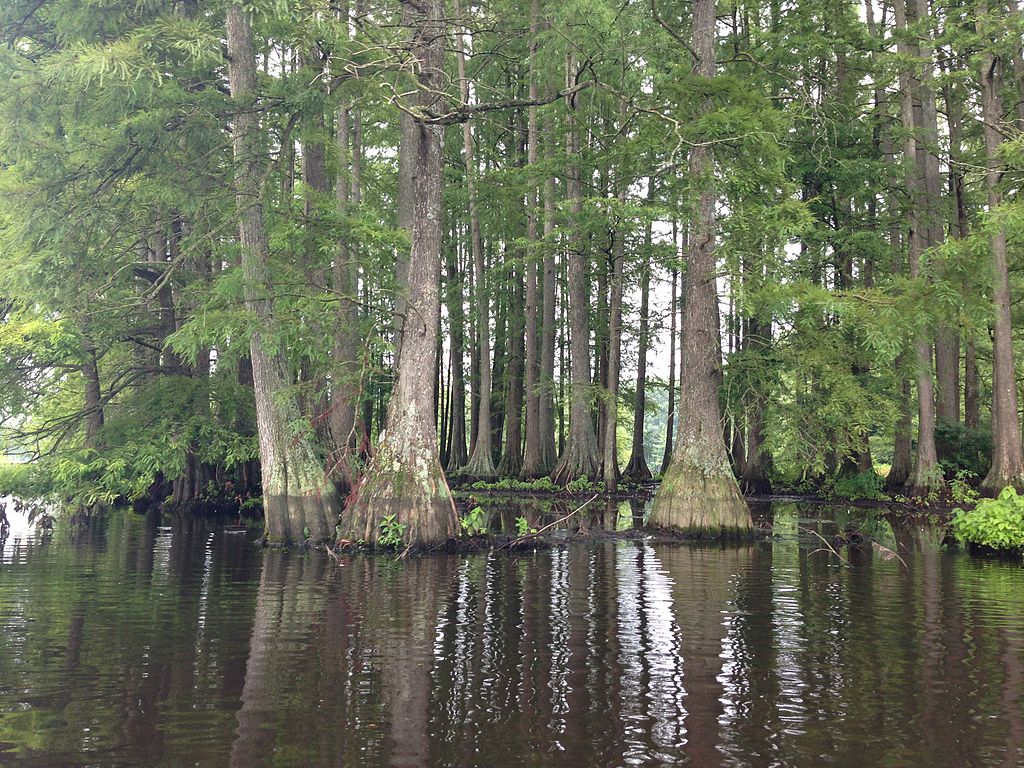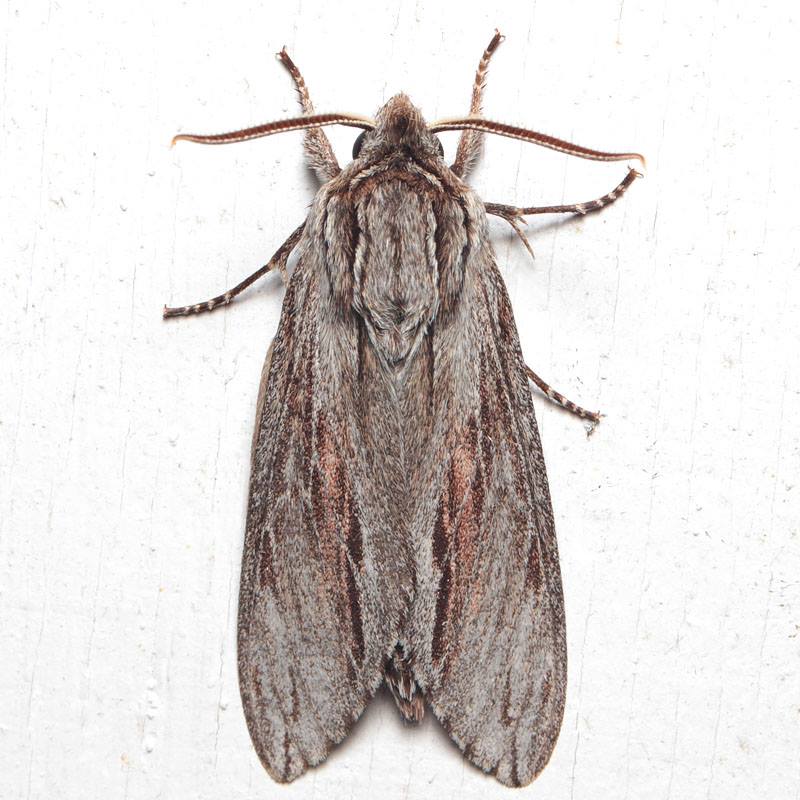I’m a day late with “I”. I write at the end of the day, and yesterday I fell asleep while writing. Without further ado, here is “I”.
Isoparce cupressi is a moth native to the US. The prefix iso- is Greek for identical. Cupressi is Latin for “of cypress”. Parce, well I’m going to say it’s a misspelling of Parcae. Parcae are the three fates of Roman mythology. Put it all together and you get “identical fate of the cypress”, which I like. We all know that if you say something loud enough, it is true.
Isoparce cupressi is also known as the Cypress Sphinx. The moth looks like many others you’ve seen fluttering around your porch light. Take a look at the caterpillar. It’s quite distinct. I don’t think you’ll forget having seen one of these.
Cypress has been mentioned twice now in connection with this moth. Why? The caterpillar feeds exclusively on the Baldcypess (Taxodium distichum), a deciduous conifer.
Why “sphinx”? I don’t know, but I like it!

Isoparce cupressi
Which end is the head?
I wouldn’t argue with that spear!
The pointy end is the butt.
Why is our wonderful Cypress Sphinx imperiled? Globally she’s not. Locally she is.

Say what? Individual populations can be in trouble, but the entire species is fine because elsewhere there is no threat.
Remember my made-up meaning of the Latin name? I said, “Identical fate of the cypress.” The reason I like this name, it links the fate of the animal to the fate of its habitat. This is why the Cypress Sphinx is imperiled in three states. Her habitat is disappearing.
She lives in cypress swamps. How many are left in Maryland. TWO. Battlecreek Cypress Swamp Sanctuary (about 100 acres) and within Pocomoke River State Park. Pocomoke and Delaware (The Great Cypress Swamp) are about 10,000 acres.

These places are all that’s left of about 60,000 acres of swamp. It ran from about Trap Pond, Delaware along the Pocomoke river down to Pocomoke Sound.
… timber harvest, ditching and draining, and cultivation, in combination with drought and fire in 1930 appeared to have left a severe impression on the swamp… 1
Karen Bennett, et al.
Karen Bennett nicely summarizes the reasons for the decline in the size of the swamp. Other plants and animals only found in cypress swamps face the same problem as the Cypress Sphinx.
I leave you with the thought that we are stewards. When species become extinct on our watch, we are not very good stewards.
Featured image of is from iNaturalist
1Bennett, K. A., Bowman, P. J., Heckscher, C. M., McAvoy, W. A., and Zuelke, E. F., 1999, An ecological characterization of Delmarva’s Great Cypress Swamp Conservation Area: Delaware Natural Heritage Program, Document No. 40-05990902.

